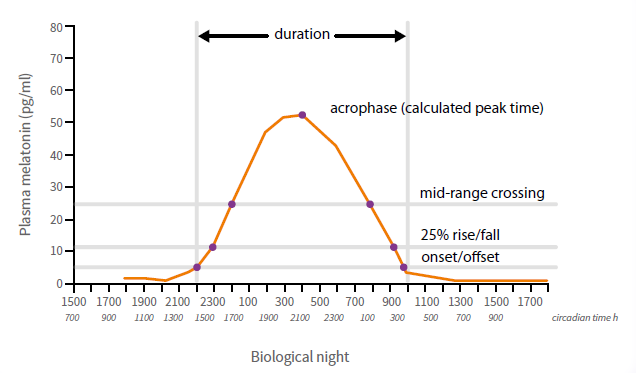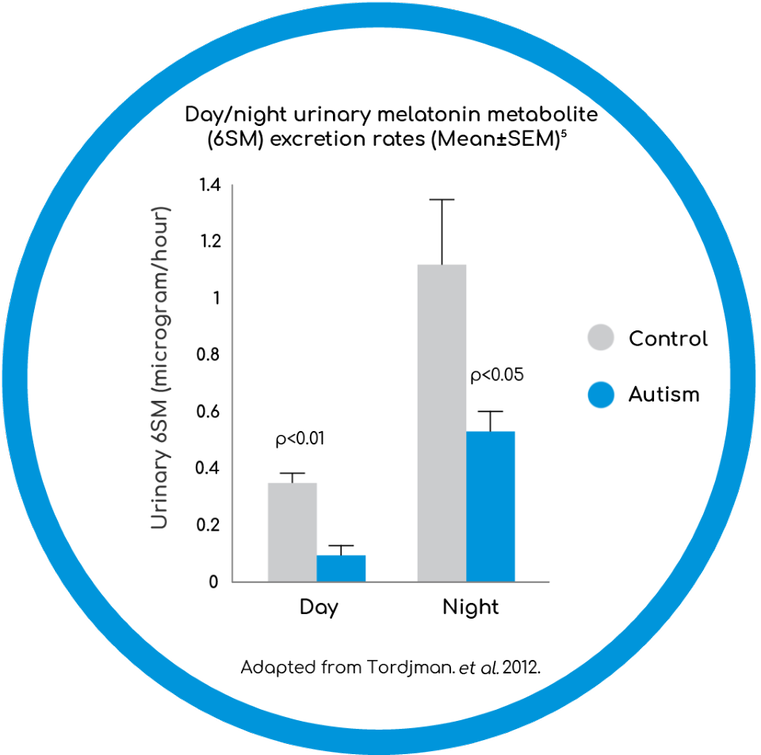Melatonin is a powerful antioxidant, involved in the regulation of circadian and seasonal rhythms and immune function.
Characteristics of the melatonin rhythm used to define timing of the internal clock.
Prior studies of melatonin production in ASD were often limited by small sample sizes and were equivocal, but all reported abnormalities in melatonin production. However, given the limitations of the available data, it is not possible to conclude if there is a general decrease in melatonin secretion during the whole 24-h cycle, or if the melatonin circadian rhythm is altered or inverted in ASD.
References:
10. Tordjman, S. et al., Day and night-time excretion of 6-sulphatoxymelatonin in adolescents and young adults with autistic disorder. Psychoneuroendocrinology. 2012; doi.org/10.1016:1-8
11. Arendt, J. Occupational Medicine, Volume 60, Issue 1, January 2010, Pages 10–20. https://academic.oup.com/occmed/article/60/1/10/1439565



